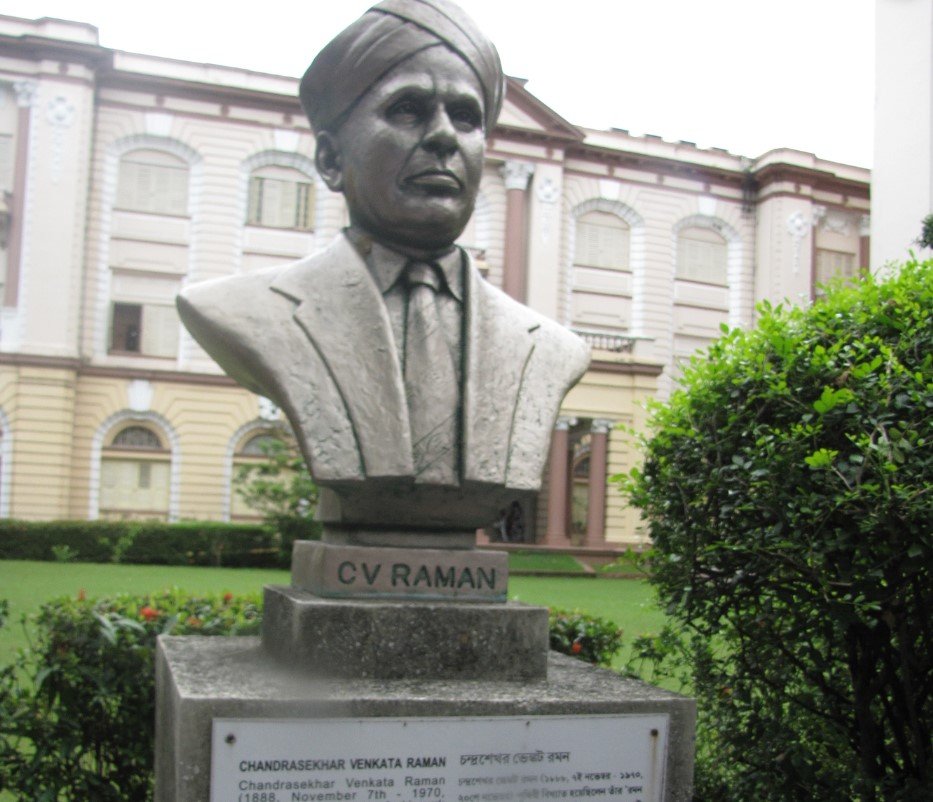On the anniversary of his birth, we remember Sir C.V. Raman—not just for uncovering the Raman Effect but for his steadfast commitment to making Indian science self-sufficient.
Sir C.V. Raman’s journey into the mysteries of light began with a straightforward query: Why is the sky blue? It wasn’t just the sky; the deep blue of the Mediterranean Sea had equally captured his imagination.
His quest didn’t stop at what Sir Isaac Newton had revealed about light’s composition. Raman delved deeper, exploring what happens when light interacts with matter in any form.
He discovered the Raman Scattering and the Raman Effect, phenomena explaining how light changes when it passes through a transparent material. This work not only answered fundamental questions about color perception but also played a crucial role in establishing the quantum nature of light—a hot topic among physicists of his time.
Beyond the Laboratory: Practical Impact Across Fields
Raman’s findings weren’t confined to theoretical physics. They opened doors to practical applications that touch various aspects of everyday life.
In chemistry, the Raman Spectrum offers a non-destructive way to analyze both organic and inorganic compounds.
Medicine has benefited by using Raman spectroscopy for non-invasive monitoring of cell activities and detecting diseases.

Environmental scientists employ it to identify pollutants in air and water. Its usefulness extends to mining, space exploration, and even art conservation.
| Field | Application |
|---|---|
| Chemistry | Analyzing compounds |
| Medicine | Monitoring cells and tissues |
| Environmental Science | Detecting air and water pollutants |
| Material Science | Advancements in nanotechnology |
| Art Conservation | Examining historical artifacts |
The versatility of his work highlights the profound practical impact of his discoveries.
Advocating for Self-Reliance in Indian Science
Born on November 7, 1888, in Tiruchirapalli, Raman became the first Asian and non-White individual to win the Nobel Prize in Physics. Despite opportunities to study abroad, he chose to build his career in India.
He believed that India could achieve greatness in science without relying on foreign institutions. This conviction often put him at odds with both British authorities and the Indian government after independence.
Raman opposed the creation of special scientific centers that diverted talent from universities. He was critical of sending young scientists abroad when collaborations could happen within India.
He argued that importing expensive scientific equipment was unnecessary. Instead, he advocated for indigenous production, which could be more cost-effective.
He believed that:
- Science thrives when rooted in strong educational institutions.
- Dependence on imports hampers true progress.
- Local collaboration fosters innovation and self-sufficiency.
A Lasting Influence on Future Generations
Raman’s impact goes beyond his own scientific achievements.
He mentored and inspired other prominent scientists like Homi Bhabha and Vikram Sarabhai. His nephew, Subrahmanyan Chandrasekhar, also won a Nobel Prize for his work on the life cycles of stars.
His dedication to science education helped shape India’s scientific community. Raman’s insistence on self-reliance continues to inspire new generations of scientists.
He showed that with curiosity and determination, significant breakthroughs could be achieved within one’s own country. His life remains a testament to the power of asking simple questions and pursuing them relentlessly.
















